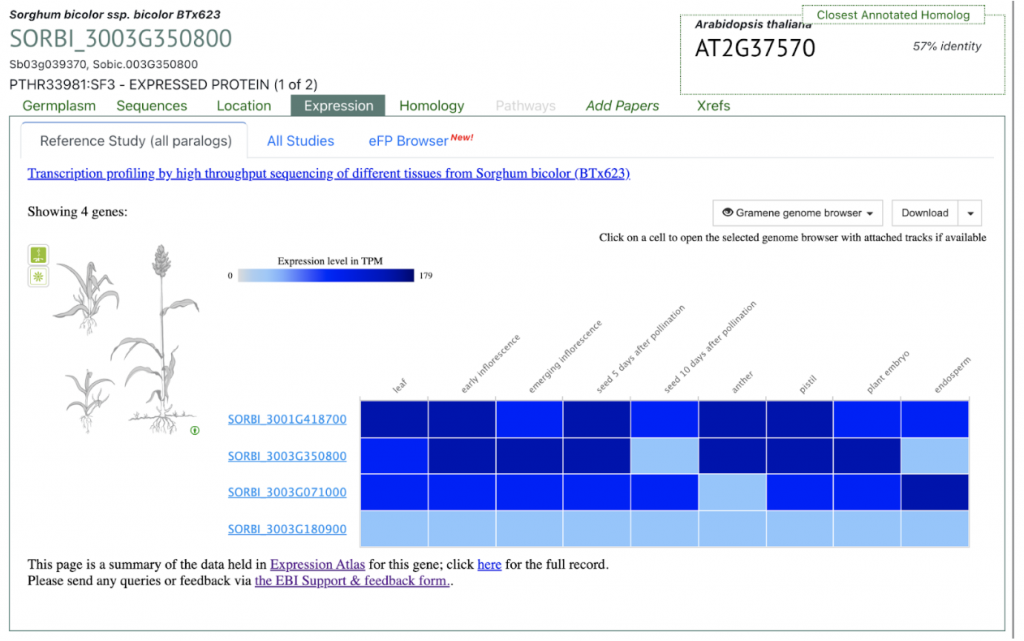Identifying Genetic Markers for Enhanced Iron and Zinc Concentrations in Sorghum through Genome-Wide Association Studies
Researchers from the International Crops for the Semi-Arid Tropics (ICRISAT) and Vasantrao Naik Marathwada Agriculture University investigated the genetic variability of iron (Fe) and zinc (Zn) concentrations in sorghum, focusing on identifying significant marker-trait associations (MTAs) using 55,068 high-quality SNP from 140 sorghum accessions. Key MTAs were found on chromosomes 1, 3, and 5, with two major effect SNPs, S01_72265728 and S05_58213541, explaining 35% and 32% of Fe and Zn phenotypic variance, respectively. S01_72265728, located in the cytochrome P450 gene, positively affected Fe accumulation, while S05_58213541, near the zinc-binding ribosomal protein gene Sobic.005G134800, was associated with Zn accumulation. The study also identified tissue-specific expression patterns of candidate genes, which could be targeted to enhance both grain and stover quality. The tissue-specific expression of five identified genes was analyzed in 36 sorghum tissues at three different growth stages of the plant. Sobic.003G350800, which is a peptidase S8/S53 domain-containing protein, showed higher levels of expression in several tissues such as leaf, root, flower, panicle, and stem. These findings provide valuable insights for breeding programs aimed at biofortifying sorghum with essential micronutrients.
The study underscores the potential of using genome-wide association studies (GWAS) to uncover genetic factors related to Fe and Zn concentrations in sorghum. By employing various GWAS models, including Multi-Locus Mixed Model (MLMM), Bayesian-information and Linkage-disequilibrium Iteratively Nested Keyway (BLINK), Fixed and random model Circulating Probability Unification (FarmCPU), and Settlement of MLM Under Progressively Exclusive Relationship (SUPER), the researchers ensured robust detection of quantitative trait loci (QTLs) associated with these micronutrients. BDespite the small population size, significant marker-trait associations (MTAs) were identified, indicating the effectiveness of the approach. The research also highlighted the importance of haplotype-based breeding for developing nutrient-rich sorghum varieties. The identification of haplotypes associated with high Fe and Zn traits provides a promising avenue for improving sorghum’s nutritional quality. Overall, this work contributes significantly to the understanding of the genetic basis of Fe and Zn biofortification in sorghum, paving the way for future breeding efforts aimed at addressing micronutrient deficiencies and enhancing food security.
SorghumBase example:

Reference:
Thakur NR, Gorthy S, Vemula A, Odeny DA, Ruperao P, Sargar PR, Mehtre SP, Kalpande HV, Habyarimana E. Genome-wide association study and expression of candidate genes for Fe and Zn concentration in sorghum grains. Sci Rep. 2024 Jun 3;14(1):12729. PMID: 38830906. doi: 10.1038/s41598-024-63308-0. Read more

